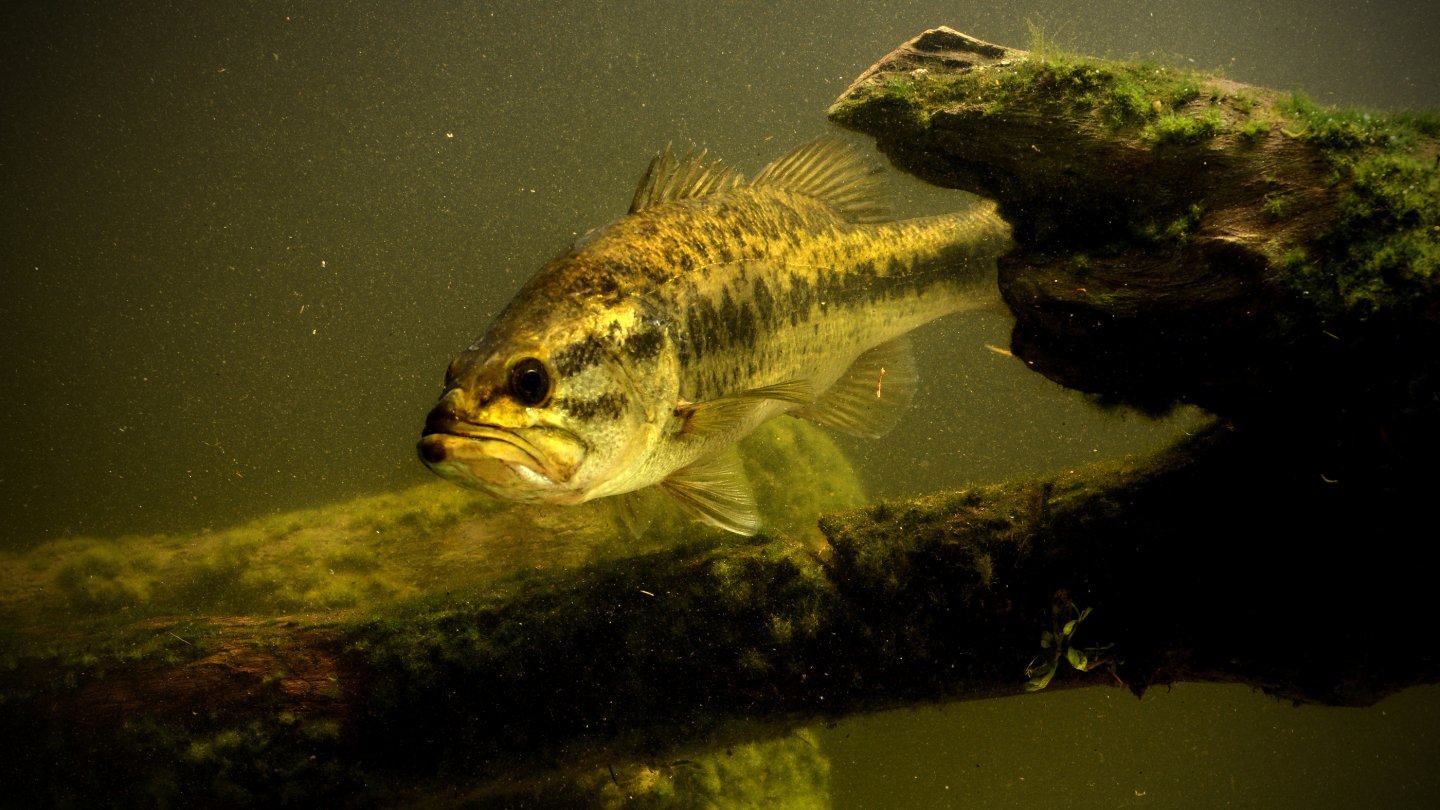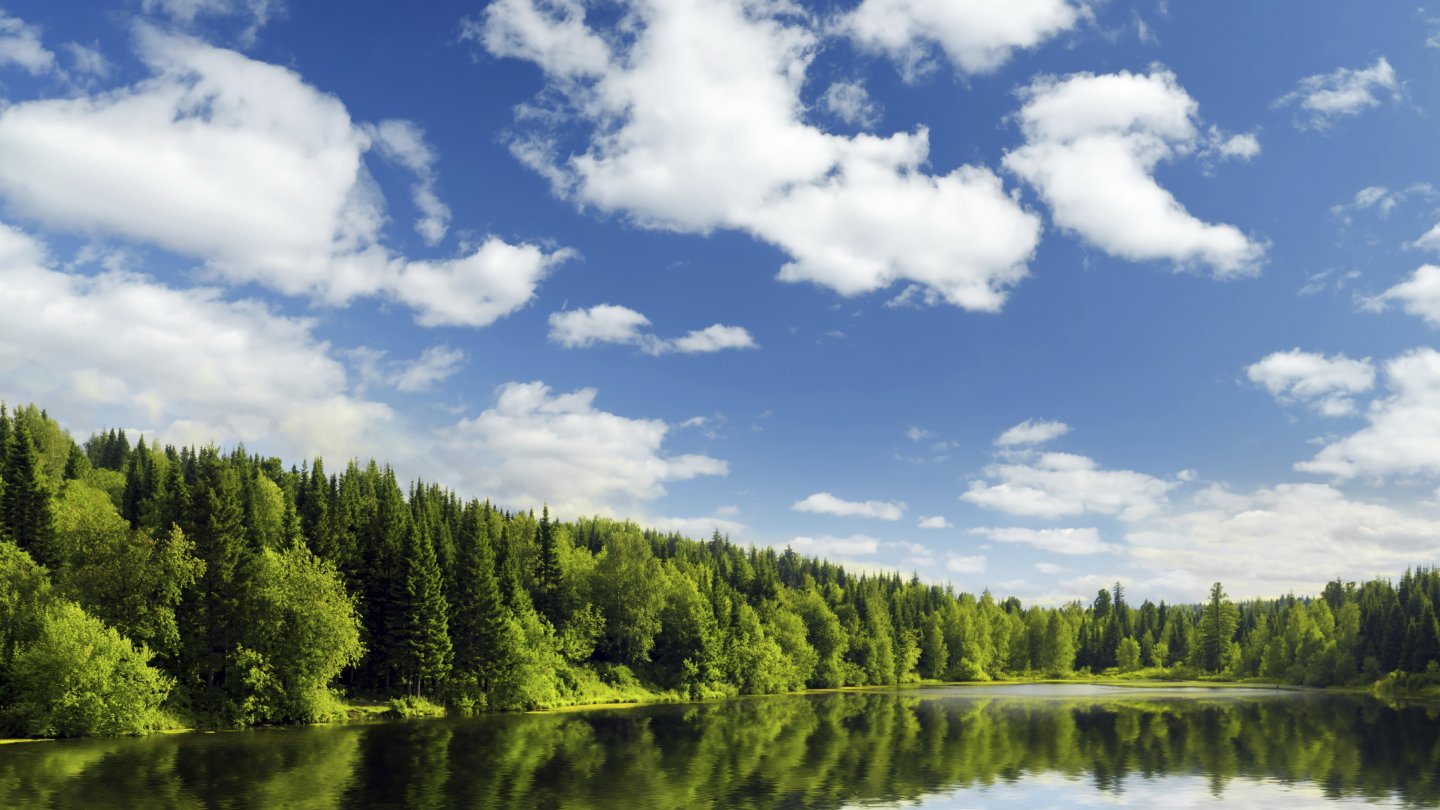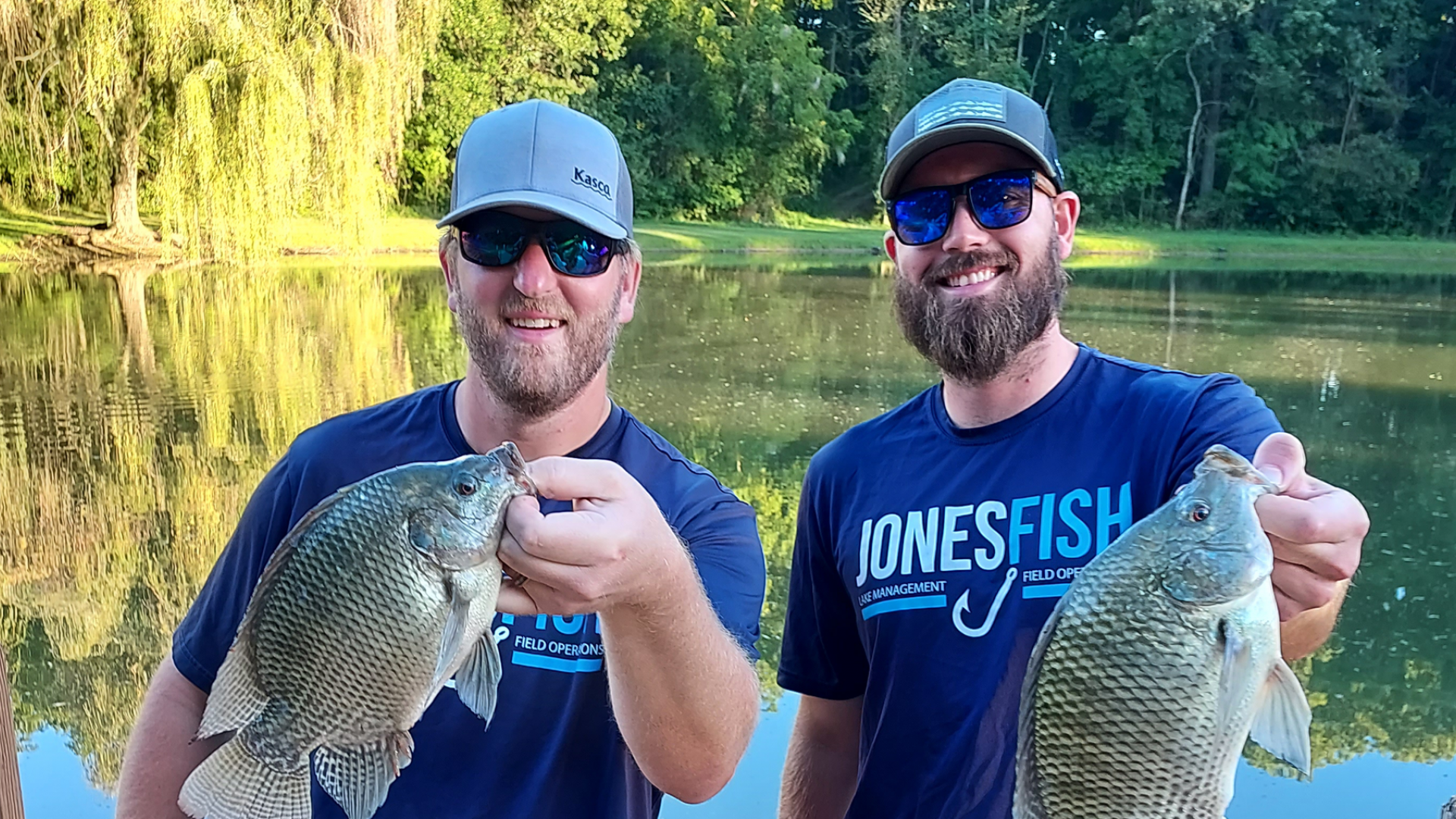
Phosphorus is vital to the productivity of your pond, but too much of a good thing can cause problems. Nuisance aquatic weeds and an overabundance of algae are often the result of excessive phosphorus or imbalanced nutrients. It’s important to keep this in mind when selecting a management strategy.
Applying an herbicide or algaecide today might knock back the growth, but you haven’t reduced nutrients from the pond. The dying vegetation sinks to the bottom and begins to decompose. The decomposition process consumes available oxygen on the pond bottom and ultimately releases phosphorus back into the water. Once the nutrients are “free,” they can be used by weeds and algae – perpetuating the cycle. We often hear “my pond looked good for the first few years, but now it’s overrun with weeds.” This trend is a result of an aging, and often more nutrient-rich, water body. Snow/ice melt and spring rains mobilize phosphorus in the watershed. Waste from waterfowl, leaf litter and grass clippings can also increase the phosphorus levels in your pond. Earlier blog posts have focused on reducing phosphorus with phosphorus binders and wetland plantings, but we’re taking a different approach today. Today, we’re going to look at using tilapia as a biological control method.
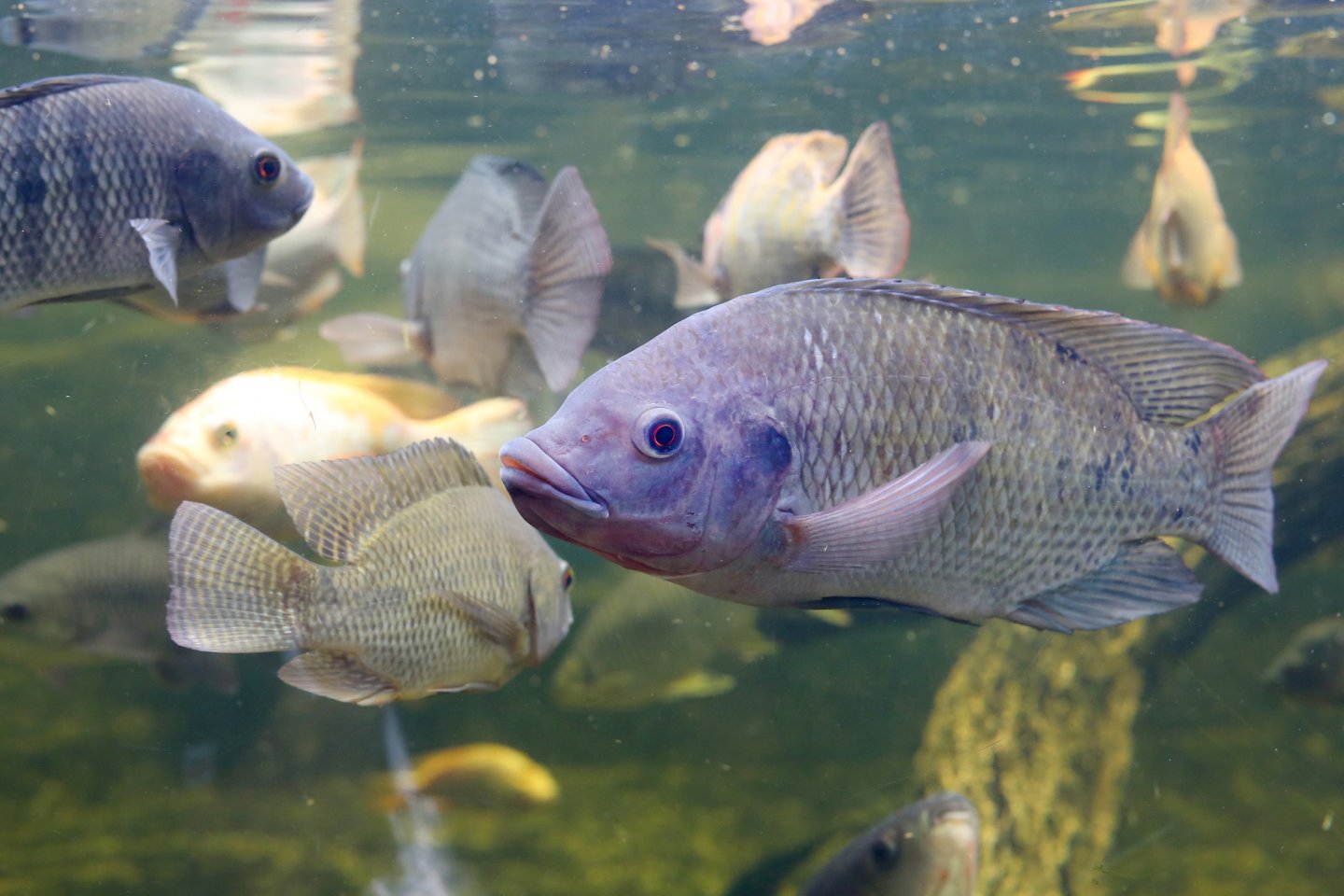
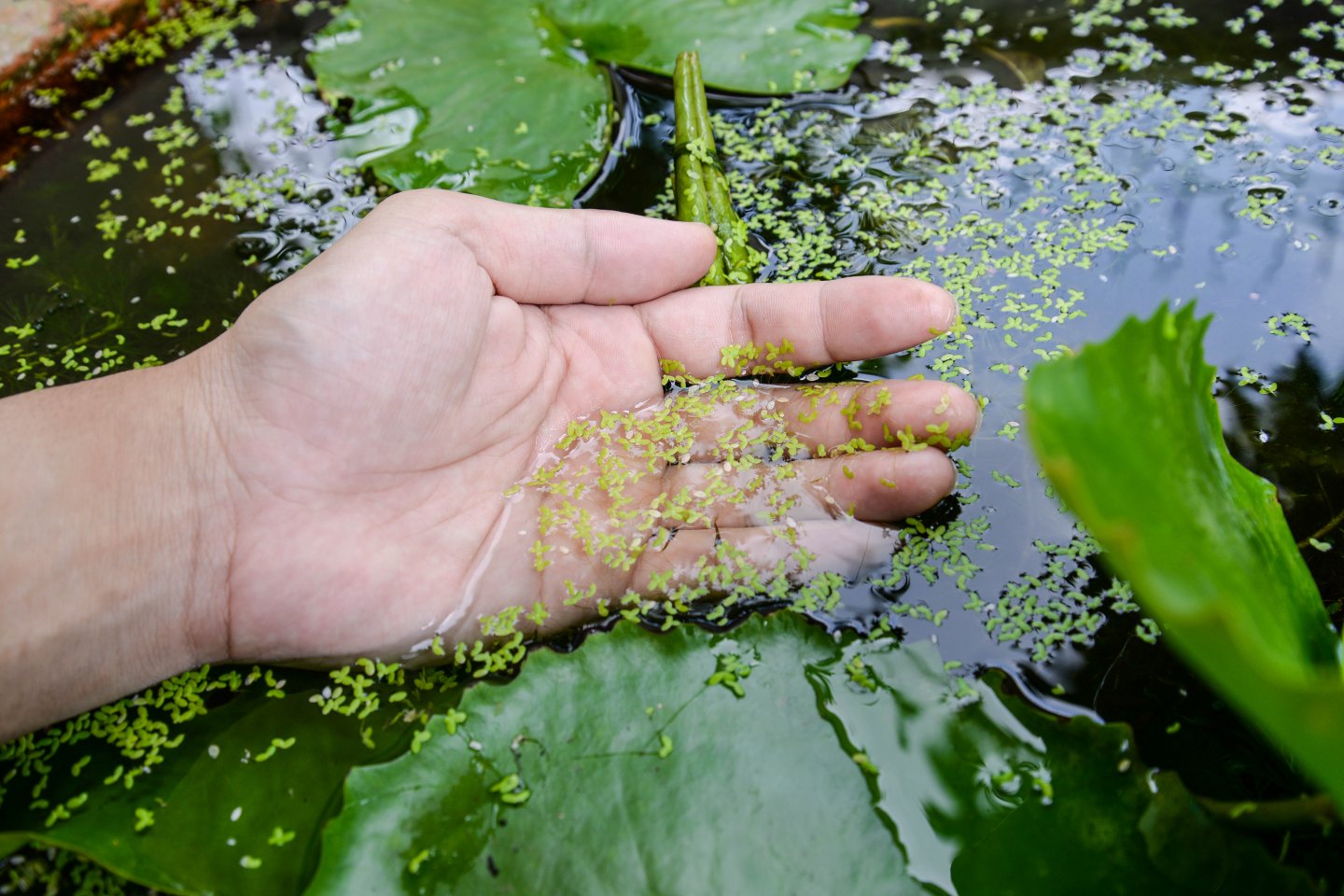
Our team of biologists employs herbicides and algaecides in our annual aquatic weed and algae control programs, but we use them as part of an integrated management approach. We must emphasize that relying solely on these chemicals isn’t always enough to keep the pond healthy. Adding beneficial bacteria and installing an aeration system are two obvious ways to improve the health of your water and limit nuisance vegetation. Several years ago, our senior staff biologists pushed to stock tilapia at our farm to see if the reports of tilapia aiding in the control of duckweed and filamentous algae in ponds and lakes were accurate. Tilapia are herbivorous fish native to Africa, feeding primarily on plankton, algae and aquatic weeds. They’re an extremely important aquaculture species because they have a mild flavor and grow quickly – as a result, they are a common menu fixture in restaurants. Their popularity in aquaculture has led to several studies measuring their effect on cyanobacteria in a pond. These studies show that the filter-feeding behavior of tilapia can result in significant cyanobacteria reduction in the water column. After stocking tilapia in some of our production ponds with favorable results, we decided to introduce tilapia to some of the ponds we managed. Stocking them in a pond means we can take advantage of their natural feeding habits to curb the growth of nuisance algae, duckweed and even cyanobacteria growth. Cyanobacteria management especially is difficult and requires a multi-faceted approach to provide acceptable control.
In warm water, these fish are very active and grow quickly. In the late spring, we stock fish in the 5–10-inch range. In just a few months, these fish can be upwards of 1 pound! This added pressure on vegetation by rapidly growing fish, can reduce the need for herbicides and algaecides.
So what’s the catch?
We know introducing tilapia mid-season before it gets too hot can help ensure the pond is in good shape before the heat of summer kicks in. Having tilapia consuming weeds and algae reduces the need for herbicides and algaecides. Unfortunately, these fish are not without their limitations. Like other animals, they tend to be selective in what they will and won’t eat. Tilapia have relatively small mouths, so vegetation like duckweed, Chara, coontail and algae seem to be easier for them to eat and are better controlled than plants with thick stems or large, waxy leaves. The biggest limitation is that tilapia won’t survive the winter in the Midwest and must be restocked annually. As temperatures start dropping in the fall and water temperatures slowly cool, the tilapia become less active. It’s important to begin fishing for tilapia at the end of the summer. Waiting too late in the year means you’ll be struggling to catch fish that are simply less active and less interested in your lures.
Start harvest in late August-through September. Because of their gluttonous omnivorous feeding habits, a variety of baits work – but you may find you need to change up lures frequently to find out exactly what your tilapia are keyed in on. Our team has personally had luck with worms, fathead and golden shiner minnows, and artificial flies. Clients that pellet feed their other fish will find these fish are easy to catch on similar offerings of dough balls made from pellet chow. Our team relishes the opportunity to fish tilapia because they’re hard fighting and excellent table fare.
Ultimately, tilapia are not a fit for every situation, nor are they a replacement for aeration, herbicides/algaecides and nutrient reduction. They are a biological control that can play a role in an integrated management strategy. We are constantly innovating and adapting our management programs to create healthy, clean ponds and lakes for our clients. It’s important to remember that there isn’t a simple, one size fits all strategy, because ponds and lakes are their own unique ecosystems. Taking a simple approach with little to no regard for the ecosystem might lead to short term results but also future complications. Adopting an integrated management approach is the key to long-term success. If you’re interested in adding tilapia to your annual program or want to learn more about our professional pond management programs, contact us today!


